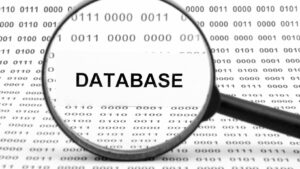In the digital world, database relationships are the unsung heroes, silently orchestrating the symphony of interconnected data. They’re the invisible threads that weave together disparate pieces of information, creating a cohesive, comprehensive, and accessible data tapestry. This article will delve into the intricate world of these relationships, shedding light on their vital role in data management.
Database Relationships
Zooming in on the specifics of database relationships, it’s critical to recognize three primary types, the role of foreign keys, and the essential concept of referential integrity.
Types of Database Relationships
 Covering the ground on types of database relationships, databases primarily foster three types of relationships: one-to-one, one-to-many, and many-to-many.
Covering the ground on types of database relationships, databases primarily foster three types of relationships: one-to-one, one-to-many, and many-to-many.
A one-to-one relationship mirrors real-life scenarios. For instance, a US citizen having one Social Security Number while the Social Security Number goes back to one individual shows this relationship type’s precision.
Taking a step further, a one-to-many relationship allows for a multitude of connections. Imagine a book written by one author. Here, the author (one) can write multiple books (many), casting this in the light of a one-to-many relationship.
Last but not least, a many-to-many relationship paints a picture of complex interconnections. A business model where multiple vendors sell multiple products offers a classic example of this relationship.
Delving Into One-to-Many Relationships
Characteristics of One-to-Many Relationships
One-to-many relationships in a database signify a direct, non-circular connection between two entities, where an instance from the first entity relates to multiple instances from the second, but not vice versa. Usually, the ‘one’ side holds a primary key that serves as the unique identifier, while the ‘many’ side has a foreign key that harks back to this primary key. This structure effectively mitigates data redundancy, an aspect pivotal for maintaining a clean and efficient database.
Examples of One-to-Many Relationships in Action
Taking a real-world example, consider an online bookstore. Here, one author can write many books, hence forming a one-to-many relationship between ‘Author’ and ‘Books’. In the database, the ‘Author’ table may have a field ‘Author_ID’, acting as the primary key. The ‘Books’ table, with its field ‘Author_ID’, references this primary key, making ‘Author_ID’ the foreign key.
Another example takes root in the department-employee framework of businesses. Each department houses multiple employees, but each employee belongs to just one department. The ‘Department’ table contains ‘Dept_ID’ as a primary key, and ‘Employee’ table connects through a corresponding ‘Dept_ID’ foreign key.
Analyzing Many-to-Many Relationships
The Complex Nature of Many-to-Many Relationships
Many-to-many relationships possess more complexity in their nature, compared to one-to-many relationships discussed before. They occur when one or more rows in a table are associated with one or more rows in another table. Examples serve best to describe this complexity, consider students and classes. A single student can enroll in multiple classes, and, concurrently, each class hosts multiple students.
Implementing Intersection Tables
 Implementing many-to-many relationships directly within database schemas incurs redundancy and confusion. Therefore, the usage of intersection tables, also known as bridge tables or join tables, becomes a common practice. These tables connect the two entities involved in the many-to-many relationship, preserving the uniformity of the database design. The intersection table carries foreign keys from both connected tables, acting as a bridge. In our student-class example, an enrollment table may serve as this bridge, connecting students to their respective classes. It eliminates redundancy, retains delineation of roles, and secures data integrity. A sound understanding of many-to-many relationships significantly contributes to any robust, well-organized database system.
Implementing many-to-many relationships directly within database schemas incurs redundancy and confusion. Therefore, the usage of intersection tables, also known as bridge tables or join tables, becomes a common practice. These tables connect the two entities involved in the many-to-many relationship, preserving the uniformity of the database design. The intersection table carries foreign keys from both connected tables, acting as a bridge. In our student-class example, an enrollment table may serve as this bridge, connecting students to their respective classes. It eliminates redundancy, retains delineation of roles, and secures data integrity. A sound understanding of many-to-many relationships significantly contributes to any robust, well-organized database system.
What You Need To Know
Navigating the world of database relationships isn’t always straightforward. But with a firm grasp on one-to-one, one-to-many, and many-to-many relationships, it’s easier to maintain database integrity and prevent data redundancy. The role of foreign keys in these relationships is indispensable, ensuring data consistency and database efficiency.

